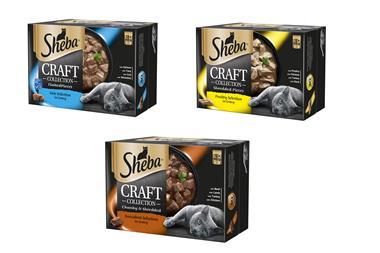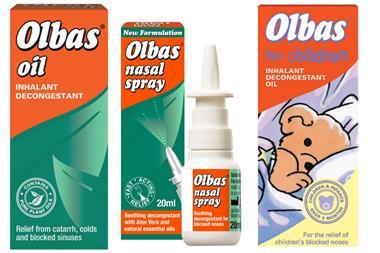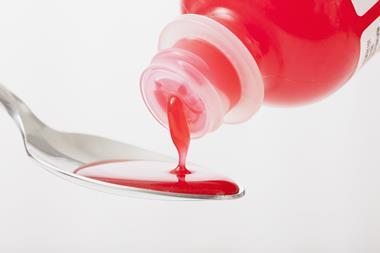The pet care category offers retailers the chance to make their store a destination for an army of animal lovers, and lap up extra sales, too
There’s no getting away from the fact Britain is a nation of pet lovers. Our TV screens are littered with shows dedicated to our four-legged friends, and shoppers spend on average £1,150 a year on their animals, according to the Pet Food Manufacturing Association (PFMA).
More than a quarter of owners admit that they like to pamper their animals, and 66% are drawn into buying pet accessories, PFMA reports. All this adds up to animal magic for convenience retailers looking to increase sales.
Venu Mittapally, owner of Lifestyle Extra in Llanelli, has given his pet care range a much more prominent place to take advantage of the demand from his elderly customers. He says: “Since our refit last year we have doubled the size of our pet food range, which is an especially big market for us.”
Venu benefits from additional spend in other categories, too, and he’s not alone. Pet food shoppers are more likely to spend more than most other customers, with an average basket spend of £11.19 compared with £6.28 (HIM CTP 2017).
These customers also like to buy bigger volumes when shopping for their pets; an average of 4.7 items per shop compared with 2.6 items for the standard c-store shopper (HIM CTP 2017).
Jerry Tweney, owner of Prestbury Village Stores in Cheltenham, is so sure of the opportunity from pet care at his Budgens store that he’s considering taking out an aisle of snacking to fit in an extra metre for pets.
He says he has been talking to Booker about extending the pet care range in the store.
He says: “Prestbury has a very high-end clientele and we get a huge amount of dog walkers passing the shop. At the moment, however, our range is far too small and we need to add an extra bay into the shop so we can accommodate more stock.
“We’ve had requests from customers about pet accessories, toys and leads, especially since the first winter snow fall.”
Jerry believes that his customers want to buy more pet accessories at this time because they can use them to keep their animals entertained during the cold winter months.
For Kate Mills, owner of Heath Stores in Horsmonden in Kent, it’s pet snacking items that are the best performing in the category.
She says: “Most of our pet care items tend to be a distress purchase. We have a lot of elderly customers and they tend to buy the most.
“Our pet snacks range from Homeware Essentials, one of our Londis supply partners, is extremely popular and is a huge seller in our store,” she says.
The statistics back up Kate’s experience. Volume sales of cat treats grew by 1.8% and 1% year on year in 2016 and 2017 respectively. Spending on dog treats has also jumped, by 4.5% and 4.1% over the same period (Kantar Worldpanel).
Kate adds: “We offer own-brand products alongside the more premium brands. The middle-priced products tend to miss out as people are more willing to trade up or opt for a cheap option when in a hurry.
“The main thing is that we offer something different compared with the supermarkets.”
Kay Patel, owner of seven Best-one stores in London, believes convenience stores always seem to do well out of pet care and says treats and luxury gourmet meals are all doing far better now than they ever have done in the past.
He puts the success down to the trends of convenience, health and premiumisation, and the convenient location of c-stores. He says: “Pet food and pet care have always been massive markets for us. New reduced pack sizes mean it is easier for people to pop in and pick the items they need. Even with the bulky products such as cat litter, shoppers are coming to us rather than the supermarket because they don’t have far to carry it all home.”
Giuliano Buccino, head of marketing at IAMS believes retailers can boost sales of premium pet nutrition by focusing on pet food’s improved health benefits and the product’s cost per meal, as well as through encouraging cross-category purchases.
He says: “Retailers can boost in-store purchases by ensuring their ranges are tailored to suit evolving shopping habits. For example, offering more personalised solutions in line with the humanisation trend, such as life-stage specific products in various pack sizes, alongside eye-grabbing visuals to capture shoppers’ attention and educate consumers on what to feed their pet and why, in addition to clearly communicating the range available.”
He advises retailers to ensure clear segmentation, highlighting advanced nutrition, natural options and mid-tier products, using POS material that communicates the reasons to buy and a product’s benefits.
Buccino believes the gap between the trends in pet and human food are narrowing, with shoppers more concerned about health, low sugar and reduced fat in their pet’s food as well as their own.
He adds: “Iams Proactive Health offers cats 47% more animal proteins and dogs 24% more protein than the top two leading brands (IRI data for 52 weeks ending 16 September 2017), with chicken and turkey being the number one ingredient to ensure a healthy, active life for cats and dogs.
“Protein is a critical nutrient for pets as it needs replacing daily to support the skin and coat, muscles, digestion, tissues such as the liver and even important messengers such as hormones.”
New treats from mars petcare
Mars Petcare has added two new products to capitalise on the demand for premium cat and dog treats.
The first, Pedigree Ranchos, is designed to help Mars break into the high-meat category. With value growth of 26%, the sector is one of the fastest-growing areas within pet care and treats (Nielsen and Euromonitor).
Pedigree UK senior brand manager Arthur Renault says: “Every year, nine out of 10 dog owners buy care and treats to bond with and reward their dog, generating more than £370m. To grow the category we need to convert more shoppers to buyers, or give existing shoppers new reasons to buy more. We know that dogs naturally love meat, and Pedigree Ranchos are designed for dogs to enjoy.
“Additionally, our expansion into the high-meat segment will drive premiumisation and boost the price per kg for dog treats.”
The Pedigree Ranchos range is available now in three variants – beef, lamb and chicken –(rrp £2.50 for 70g pack).
Also new from Mars Petcare is Sheba Creamy Snacks, a pâté-style cat treat. The range comes in daily portions and is available in chicken, salmon and beef flavours. Each sachet contains less than 3% fat, no artificial colours or additives, and is low in calories (rrp £1.50 for 4x12g pack).
Barry Goode, senior brand manager for Sheba, says: “The cat care and treats category is worth more than £80m in the UK and has seen excellent growth in the past two years. Hand-fed treats have seen double-digit growth in the past year.
“Sheba Creamy Snacks have been designed for hand-feeding – the viscosity of the liquid makes for a unique feeding experience that cats love, and owners benefit from an intimate moment of facetime that can often be difficult to experience with cats.”
Sheba Creamy Snacks will be supported by a PR and digital media campaign, as well as a new TV advert.
High standards
The trend means that pet food shoppers are becoming swayed less by price than they used to be, and how appetising a product looks is playing a role. According to HIM CTP 2017, 34% of shoppers in 2017 bought pet food because it was on promotion, compared with 56% in 2015. The study also finds that 32% are buying pet food because it looks tempting.
Aaron Burton, national account manager for Vet’s Kitchen, says that its research backs up the notion that the focus on value is shifting towards a focus on nutrition and that pet owners are increasingly treating their pets more like humans than animals.
He explains: “Our research shows that 87% of owners treat their pet like a member of the family rather than an animal.
“We see this trend as being most common among the new generation of millennial pet owners who are treating their pets like they would their children and also empty nesters who enjoy the companionship once the children have left home.
“It comes as no surprise then that the key growth area in the sector is food that promotes pet health and wellbeing, with consumers spending more time researching pet food and wanting true independent brands that put their pets’ health first.”
Agathe Robert, senior brand manager for Gourmet, has noticed more customers are seeking out luxury pet food options, as an alternative menu for their animals. The premium cat food market is growing 10% year on year (IRI 52 weeks w/e 2 December 2017).
She says: “Sales of single-serve cat food are worth £77.3m at retail in convenience, so retailers currently have a great opportunity to benefit their bottom line by taking advantage of this market trend and stocking premium ranges.”
Following a packaging redesign and media campaign launched last year, the Gourmet brand is also investing in marketing communication throughout 2018, to support its premium cat food range.
In terms of value for money, Robert believes pricemarked (PMPs) are still contributing to positive price perception and may help to drive up impulse purchases in c-stores.
She adds: “We know that consumers respond well to simplicity in-store, so for the biggest sales impact retailers should also position market leaders at eye-level, as well as utilising end-of-aisle displays to maximise exposure. What’s more, retailers should take consumer trends into consideration when selecting which pet food products to stock in order to increase sales.”
To boost impulse buys, Kay is focusing on offering a wide range of accessories.
“We do a range of accessories and leads in the store, made by a third party supplier,” he says. “They sit alongside our existing pet range and, although they’re not the biggest sellers, they have high margins and no dates so can sit on the shelf without having to be thrown away.
“The shelf clip-strips are particularly useful for storing pet products because people come in and pick them up as they go. It all adds additional spend to the store.”
Kay adds: “A few months ago, I sold 25 cat litter scoops for £1 each. They only cost me 25p and the incremental sales were very welcome.”
Health and luxury on the menu
Vet’s Kitchen believes pet food products that strike a balance between health and luxury can really drive sales within the category.
The brand introduced its Chicken & Wholegrain Rice and Lamb with Sweet Potato wet dog food varieties in September last year, but the range has really taken off in recent months, with sales doubling over the Christmas and New Year period, the company reports.
Vet’s Kitchen managing director Jenny Philp says c-store retailers are ideally placed to make the most of the pet food category. “With more consumers prioritising smaller and more frequent shops, convenience is now the third fastest growing grocery channel so there has been such a great opportunity for convenience retailers to maximise their sales in this category.
“Pet owners are spending more on spoiling their pets so increasing impulse purchasing in treat items should be a natural addition to their purchase, as long as they are merchandised in a noticeable section where they would naturally shop for wet food formats.”
She adds that there is a growing trend towards healthier treats and those products that promote certain health benefits.
To cater for this demand, Vet’s Kitchen is also focusing on its pet snacking range. The brand’s Little Stars and Little Hearts line-ups contain only natural ingredients and are suitable for pets of all ages. Little Stars was the first UK dog treats range to be calorie rated. It contains 5kcal per treat.
Philp adds: “With more pet food products on the market than ever, pet owners are now paying more attention to where the ingredients come from, and how responsibly they have been sourced. They also want to know that the ingredients used are whole and healthy, and that they will be beneficial to their pet’s wellbeing.”
Merchandising
Liz Wood, market development organisation director for Nestlé Purina UK & Ireland, says simple merchandising techniques can make a big difference to a store’s pet food sales.
“Ensuring that products are organised into wet cat food, dry cat food, wet dog food, dry dog food, and pet snacks will make shopping the category much quicker and easier,” she says.
“It is key to stock the most popular products, such as Felix, at a good height in order to satisfy those shoppers who value speed and convenience.”
Roberto De Felice, strategic demand director for Mars Petcare UK, believes retailers can expand their pet treats offering by focusing on new product innovation, which maximises the opportunity for category growth.
He says: “Retailers should make sure they give space to npd by expanding the space given to dog care and treats.
“Site dried meat products in the centre of the aisle, between wet and dry food and next to super premium main meal offerings. This will attract maximum footfall and appeal to those who already spend most on their pets.”
De Felice also advises that retailers should engage shoppers using clip-strips, off-aisle features and on-aisle displays, in order to attract incremental impulse sales.
Burton believes it is vital that retailers are confident in the products they are selling to customers, to have a positive effect on sales. He says: “Retailers are fantastic advocates for the brands they stock and suppliers need to work in partnership with them to offer support.
“By having strong working relationships with suppliers, it will empower retailers and build confidence in what they’re selling and how best to answer customer questions.”
































No comments yet